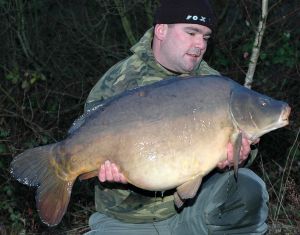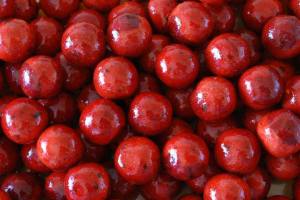Why do baits work? This quick science lesson is part three of a great informative series from Mark McKenna, the brains behind Baitcraft baits…
What should be included in our bait to trigger a feeding response like the one I’ve just described in part 2? The bulk of the research conducted to date suggests that that the most significant chemosensory stimuli are amino acids and as such a highly soluble source of this group of chemicals should always be included in a well formulated Carp bait. However studies indicate that other groups of chemicals including nucleotides, nucleosides, ‘quaternary ammonium bases’ and fatty acids are also highly attractive and therefore have a lot of potential for use in carp bait. These chemicals are entirely natural and all are common components of the excretions and extracts of common aquatic invertebrates which Carp would naturally predate.

.
As you are well aware there exists a myriad of supposed attractors available to the Carp angler including human food flavourings – some are effective, but they are in the minority in my experience based on both tank testing and results on the bank, when compared to either natural extracts or natural chemical compounds. There potential for the use of plant extracts in various forms as attractors. However the molecules contained therein must fit a receptor type sufficiently to generate a change in polarity sufficient to achieve transduction and therefore registration on our ‘control panel’. It is important to note that this does not mean that Carp are attracted to say fenugreek. It means that molecules in fenugreek may match those of a natural feed stimulant closely enough to stimulate food search behaviour.
More interestingly where an experience of eating a particular bait is positive a ‘chemical search image’ is formed and the odour or flavour of the bait is then recognised as a suitable food source instantly, when the fish comes across it again. Does this mean by slipping 5ml of Chocolate Malt
in our favourite HNV recipe we are creating a ‘label’ which is responsible for the chemical search image? No – what it means is the more satisfying the bait is nutritionally the more likely the fish is to recognise its odour when it comes across it again, particularly if its attraction properties are elevated by additives it can actually detect. If you look at the groups of attractants I’ve described you are presented with a host of opportunities when formulating bait. You could choose one or two items from one group and create a bait with an odour which will register on our Carp’s ‘control panel’ especially if by trial and error you arrive at the optimum inclusion level.

.
My own approach is to add items which achieve a sustained, aggressive, feeding response from each group of chemicals and thereby construct a more qualified package of natural attractors, lighting up more leds on our control panel than would be possible if we relied on say amino acids alone. I’m looking to create an accumulation of information that banishes any doubt as to the identity of my bait as a food item and its palatability. This synergistic approach to formulating Carp bait attractors gives the resulting bait a powerful natural attraction without having to ‘load’ it with high levels of attractants, each item need only be detectable, leaving me with a bait that is instantly and continually recognised as a valuable food source when combined with a nutritionally dense base. It has a ‘subjective’ taste and smell and will be eaten readily with much gusto, making the fish far more catchable.
I also firmly believe that as the fish have evolved to recognise each individual component of the attractant, and as none dominate the overall experience, it is far more difficult for the carp to be left with a negative ‘search image’ therefore the effective life of the bait is infinite when combined with a nutritionally complete base. I believe this is a logical approach to formulating attractors, focusing on what really attracts Carp.
I hope what I’ve written so far has got you thinking in the right direction. Next time I’ll be discussing how the bait we give to carp is digested, how we can support this and why we should, until then have a think about how well what I’ve discussed so far is represented in the bait you’re using now.
Find the first two parts here – Part 1 and Part 2
You can read more from Baitcraft over on facebook and twitter

Comments